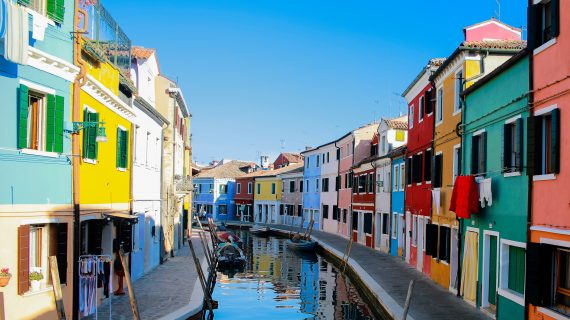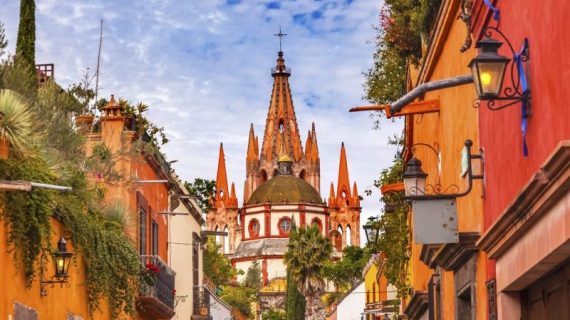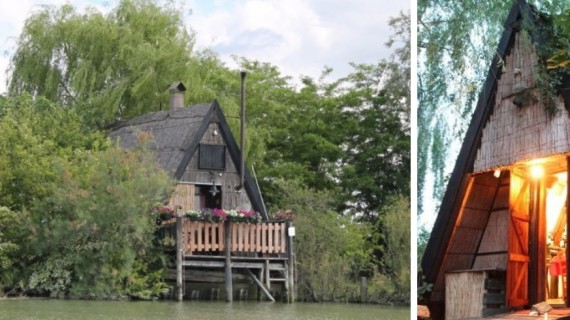Thought Venice was the only floating city? There are actually sisters and brothers of this wonderful Italian site, starting with the city of Xochimilco in Mexico.
Xochimilco is one of the 16 delegations in which Mexico City is divided. Just 22 km from the capital city, this location offers all its visitors an experience not to be missed. Let’s live this adventure together!
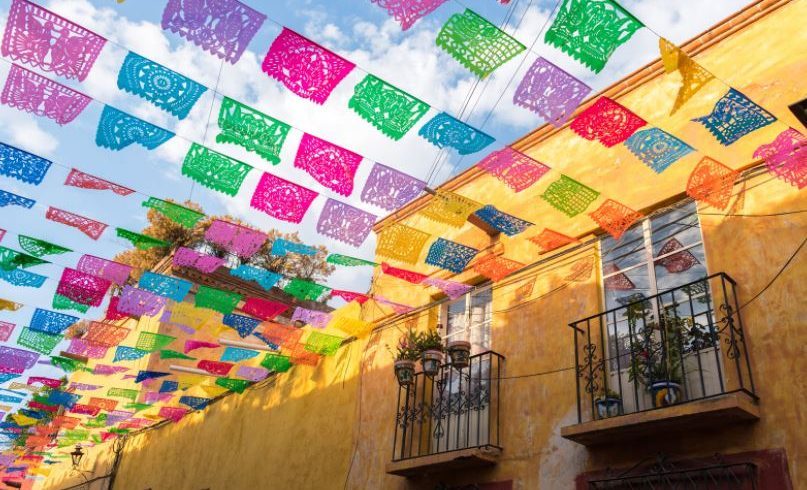
Canals, flowers, and a peaceful atmosphere. That’s what pops into my mind when I think of Xochimilco. To make you picture the scene better, think of a quiet Venice in Mexican style.

Lake Xochimilco (as well as its surrounding area) has certainly been a cornerstone of Mexico City’s history since ancient times. Source of freshwater, the lake was of paramount importance for cultivation and hunting in particular.

Before the arrival of the conquistadores, its shores were inhabited by the Aztec groups Nahuas, Xochimilcas, and Mexicas. And it precisely is with the settlement of these tribes that we discovered the system of agriculture known as ‘chinampas‘. This new technique was so revolutionary that represents one of the most important discoveries of the Aztec civilization ever.

In 1987, UNESCO recognized Lake Xochimilco as well as the ‘chinampas’ as a world heritage site.
But what are ‘las chinampas‘?

The term ‘chinampas’ refers to the Mesoamerican agricultural technique that consists of the construction of artificial islands surrounded by water and made of mud, pebbles, and branches. In Xochimilco, you’ll surely find them in the shallow areas of the lake along your trip onboard the typical boats called ‘trajineras‘.

Among the crops, we have spinach, chard, radishes, parsley, cilantro, cauliflower, celery, mint, rosemary, and salad.

Initially used as means of transport, nowadays the “trajineras” take the appearance of small kitchens and craft stores too.

So, do not hesitate to approach the banks of the river to taste some of the best dishes you will encounter in Xochimilco.
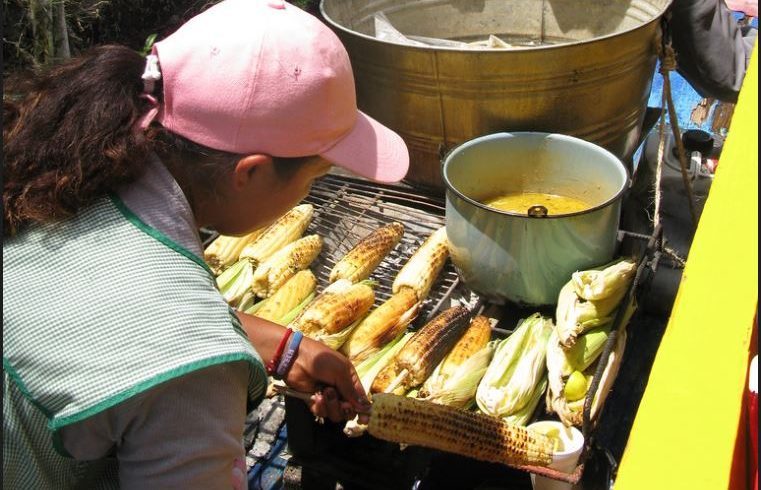
Where do I find the ‘trajineras’?
As with any bus, train, or boat, you want to take, there are specific ‘shuttle stations’ in Xochimilco. Here’s ‘los embarcaderos‘!

Los embarcaderos ‘Nativitas’, ‘Zacapa’ and ‘Las Flores Nativitas’ are the most traditional stops and lead to large craft markets, restaurants, as well as to the forest ‘Bosque de Nativitas’ and the flower market ‘Mercado Madreselva’.

Los embarcaderos ‘Fernando Celada’, ‘Cuemanco’ and ‘Puente de Urrutia’ instead offer the opportunity to travel through the channels of the ‘Protected Natural Area’ rich in flora and fauna native to Xochimilco.
‘Embarcadero de Cuemanco‘, for example, is the furthest stop from the tourist area of Xochimilco but it is among the most important ones. Located next to the Virgilio Uribe Canoeing and Rowing Track, here is where the canoeing and rowing competitions of the ’68 Olympics were held.

And it is precisely at this stop that we can continue our visit to the ecological park ‘Parque Ecologico de Xochimilco‘.
Parque Ecológico de Xochimilco
Among the chinampas, the ‘Parque Ecológico de Xochimilco‘ is the ideal place to relax in a small corner of paradise.
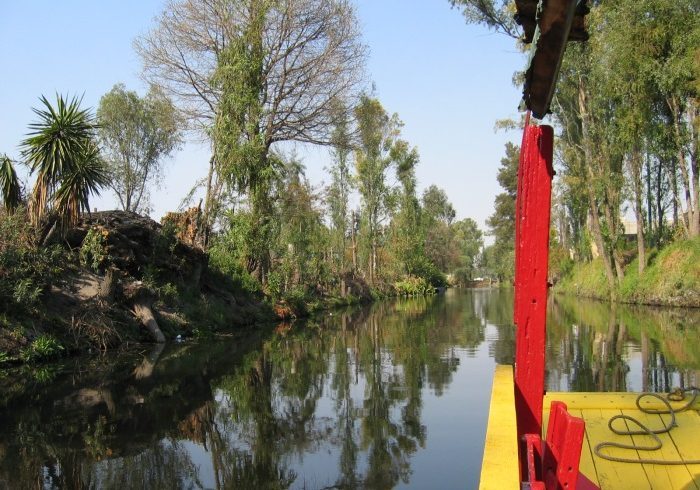
Declared a World Cultural Heritage Site in 1987, the park is committed to the rehabilitation of several areas of the reserve. In 2019, so begins the recovery of 54 hectares of land through a reforestation program, and the construction of trails and watch houses throughout the territory.
The project ended in 2021 and saw the recovery of 30 hectares of lakeshore with improved chinampas and educational areas of the park.
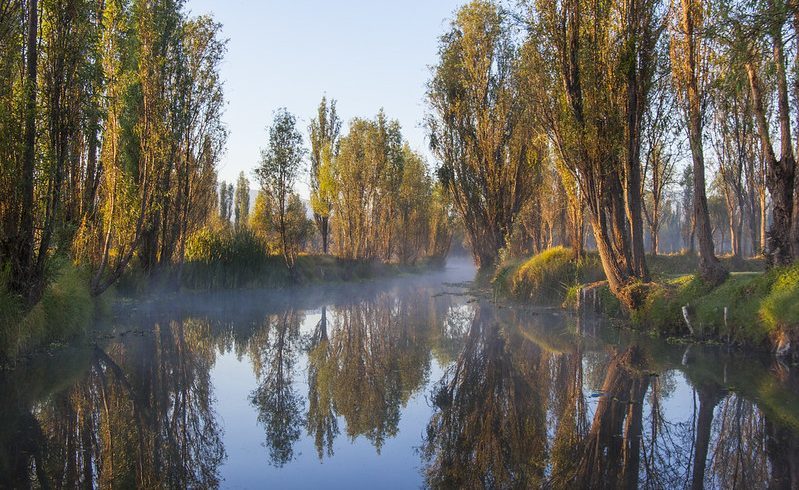
At ‘ Parque Ecológico de Xochimilco’ we find the typical chinampero and humid landscape with its unique ecosystem. Looking around you will surely recognize the ‘Ahuejote‘, the Mexican willow tree that grows on the edges of the chinampas and is considered a sacred tree by the locals.
We also find eucalyptus plants, camphor trees, tule plants, and water lilies of salmon, orange, yellow and white color.

Among the animals that inhabit this area, there are frogs, small snakes, ducks, weasels, and many species of birds including gray and white herons, Urraca, pelicans, the Mexican chough ‘zanate’, gulls, owls, and hawks.

But the most tricky animal to find is the so-called ‘axolotl‘, an endemic amphibian at risk of extinction.
The park will be the perfect place to find out more about it and observe the ‘axolotl’ up close!

The ‘Parque Ecológico de Xochimilco’ is beautiful not only for the guided tours inside the reserve but also for the possibility of renting trajineras and pedal boats, bicycles and quadricycles, and training in the dedicated sports areas.

Flower Markets
Another beauty of the city of Xochimilco is its colorful flowers. The name ‘Xochimilco’ itself comes from the Náhuatl (indigenous Mexican language) and means “the place where flowers are grown”.

Brugmansia, dahlia, sunflowers, azalea, carnation, gladiolus are just some of the varieties of flowers you’ll find around the city. If you want to take some home, flower markets are the perfect place to find any kind of tree, plant, and flower.

Among the most beautiful markets, there’s markets ‘Madreselva’, ‘El Palacio de la flor’ and the market ‘Flores de Cuemanaco’.
Museo Dolores Olmedo
When we talk about Xochimilco, there are not only canals, flowers, and nature but also history and culture.
The ‘Museo Dolores Olmedo’ is an art museum in Xochimilco created in 1994 from the personal collection of the Mexican businesswoman Dolores Olmedo.

With more than 3000 pieces, the collection mainly focuses on the spread of Frida Kahlo‘s, Diego Rivera‘s (two icons of Mexican art and culture), and Angelina Beloff‘s work. And let’s not forget the 600 pre-Hispanic pieces traceable to Mesoamerican Olmec, Mixtec, Zapotec, Totonac, Mayan, Aztec, and Western Mexican cultures.

Before turning into a museum, the building was Mrs. Olmedo’s home who had a beautiful garden built all around the main body of the house. You will be surprised by how gorgeous and green it is!
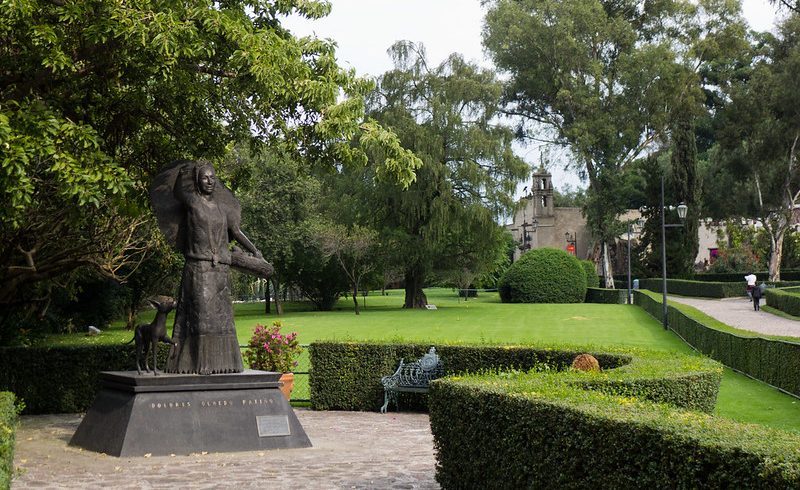
Entering the site, you’ll walk through the green gardens inhabited by free-roaming peacocks, ducks, and Xoloitzcuintles dogs (Dolores Olmedo’s favorite breed).

Rotonda de los personajes ilustres de Xochimilco
Before leaving this enchanting city, make a stop at the ‘Rotonda de los personajes ilustres de Xochimilco’. Here you’ll learn about some of the characters that have made the history of Mexican culture.
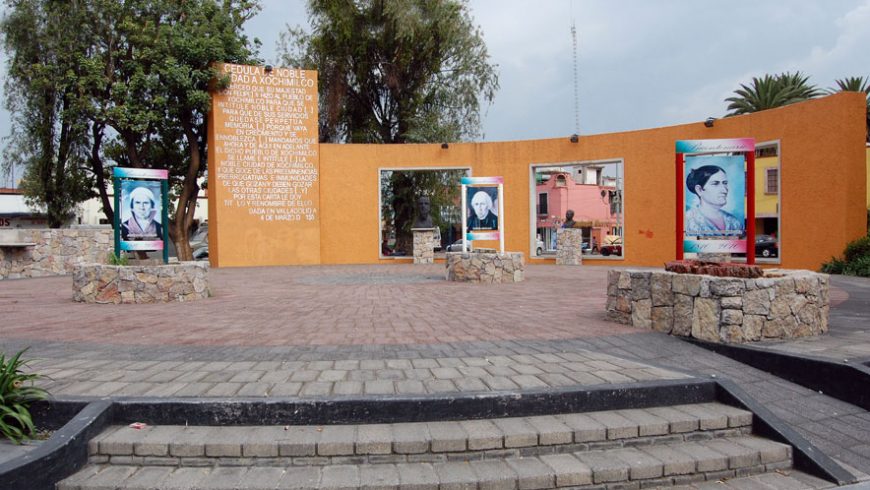
This monument honours some of the most important Mexican names in art, literature and botanic. Such as Fernando Celada, Quirino Mendoza, Juan Badiano, Francisco Goitia, and José Farias Galindo.
This city really surprised me in its simple beauty. What do you reckon?

